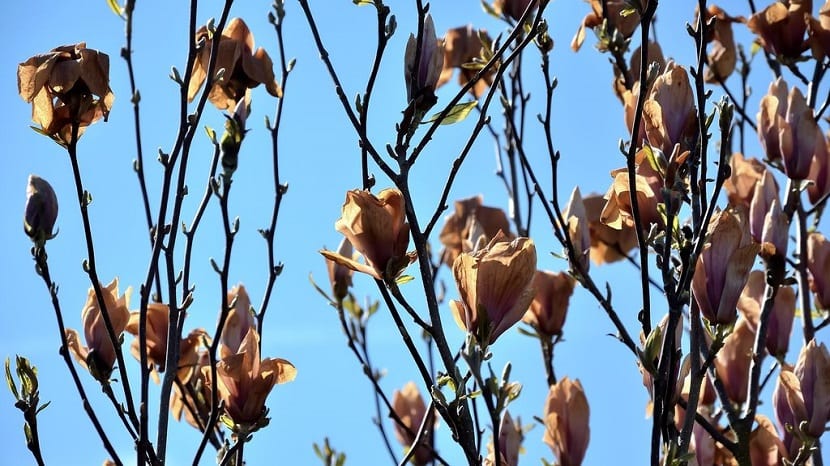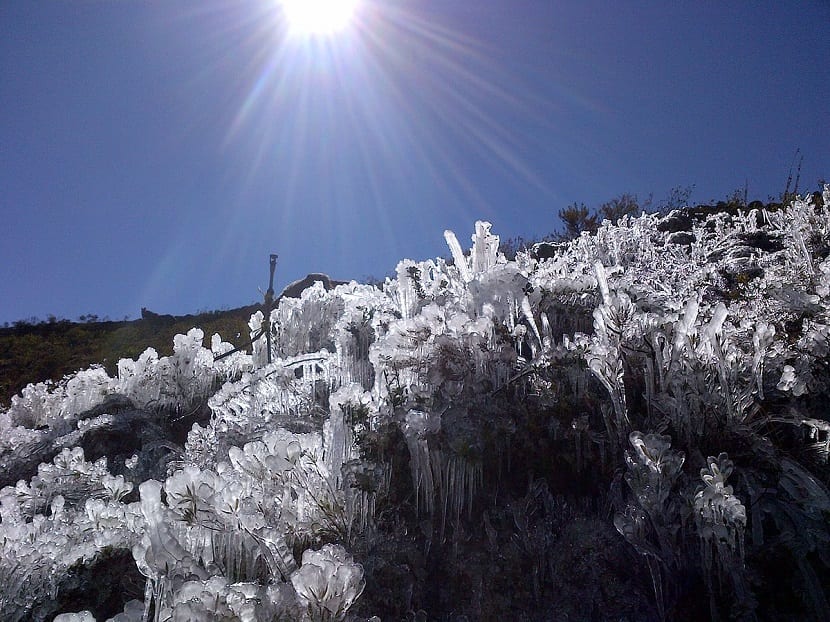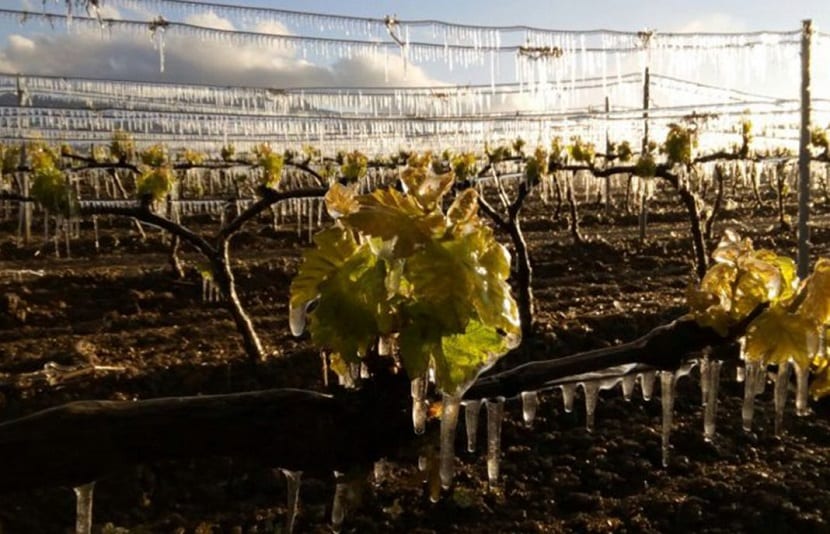
When a cold wave, it may come with some unique characteristics such as a high or low moisture content. In addition, it may or may not be accompanied by heavy rainfall. In this case, we are going to talk about the black frost. It is a phenomenon that is approaching our country with the current cold wave and with the polar mass that has entered the peninsula.
If you have ever heard the name of black frost and you are not sure what it is, stay here reading this article, because we are going to tell you everything.
What is a frost?

The first thing that we must clarify for those who do not yet know, is what a frost is. It is about a drop in temperatures below 0 ° C. When the thermometer drops below that temperature and with the atmospheric pressure that we have on our planet, the water becomes solid and forms hexagonal ice crystals that join together to form frost.
Sometimes it is not necessary to drop the temperature below 0 ° C for there to be a frost, but there are several types that we will describe below.
White frost

It is that frost in which the temperature is below 0 ° C and approaches or is equal to the temperature of the dew point. When this happens and the temperature approaches the dew point, the water begins to condense. In general, if temperatures are above 0 ° C, dew forms and falls on cars, plants, sidewalks, etc. It is then that we can see the liquid water deposited in these places. However, it is called white frost when, being at temperatures below 0 ° C, common dew turns into frost.
Black frost

We now turn to the question kit for this article. The second type of frost is the black frost. It consists of a frost in which the temperature drops below 0 ° C but frost does not form. This is because the air is so dry and does not have any moisture. As it does not have any moisture, the temperature does not equal the dew point, so there is no condensation of water, much less frost formation.
These black frosts are usually accompanied by a totally cloudy sky or some turbulence in the lower layers of the atmosphere.
Black frost damage

You might think that the fact that the frost does not cause frost is much better. However, it is more feared than white frost because it largely damages crops. The dry air that this type of frost is composed of directly attacks the internal structures of the crops and causes ice crystals to form inside the plant. When this ice forms in a pointed shape, tears the internal tissues of the plant and make the inner membranes dry out, causing the death of the plant.
It is known as black frost because the naked eye can see how the plant rots and turns black. If the damage is so strong that it affects the conditioning parts of the plant, it will die. Sometimes if we protect them enough or the frost doesn't last too long, they can survive.
The "good news" is that it's freezing it only affects plants that are evergreen. That is, when this phenomenon occurs, it attacks those plants whose vegetative state is active. Deciduous plants and trees get rid of these consequences because they have hardly any cellular activity.
These frosts cannot be anticipated too far in advance, so preparing for them is very difficult. The only thing you can do is try to protect your crops from the imminent consequences.
How to protect crops

Since plants in an active vegetative state are the most damaged, we have to do something to protect them from damage. For those plants that are in pots or that we have in the garden, it is relatively easy to protect them. You just have to put them inside the house and put them in a bright place. If we put them on a porch against the wall, they will also be protected.
Taking care of plants that are not in pot is the most complicated. However, we are going to give here some tips to prevent the black frost from destroying our plants.
- If we have a tree or shrub in the garden planted outdoors, we can cover the ground with a layer of litter. This allows a kind of barrier to be created that prevents the passage of cold to the subsoil. In this way, we will be preventing the water in the pores of the plants from freezing and destroying itself from the inside.
- We can place an irrigation system that is responsible for spraying the plant with some water. In this way, if the temperature is below 0 ° C, we will get an ice layer to form on top of the plant tissues and serve as an insulator. Ice protects plant tissues.
- Avoid over-plowing the land during the winter months. These frosts take place in the winter time. If we do not plow, we will be allowing a hard shoreline to form on top of the ground that insulates the subsoil from the cold.
- You can also place fans to move air and that a very strong drop in temperature is not caused.
- The most widely used method is crop protection with plastic or sacks. The ideal is to cover the plants with plastic or sacks and with a bucket of water inside. This is done because water loses and gains more heat in a slower way than air. This is how it acts as a thermal regulator in this micro environment, since when the water condenses on the plastic, it will release latent heat.
I hope that with these tips you can pass this black frost without any affection.